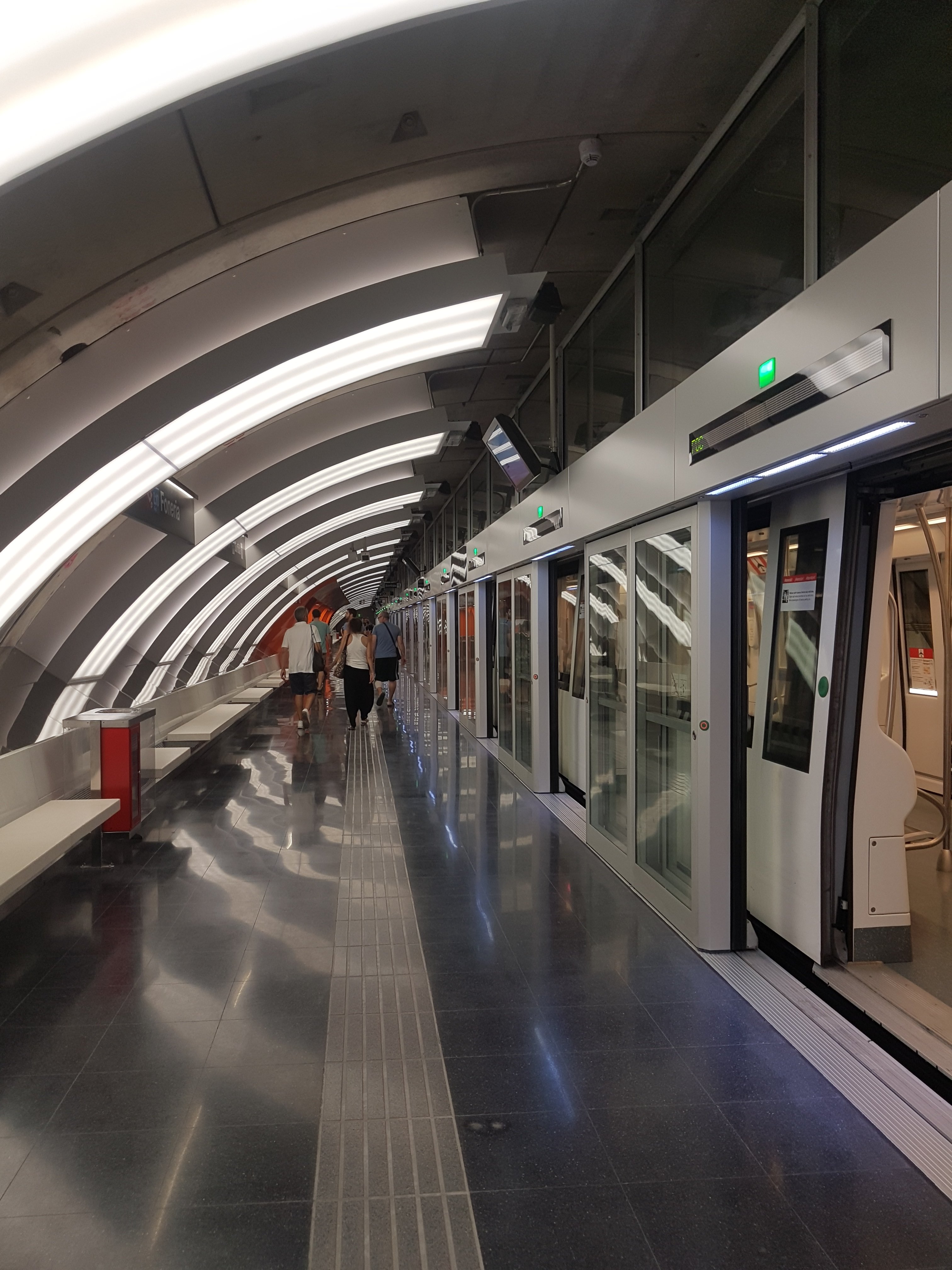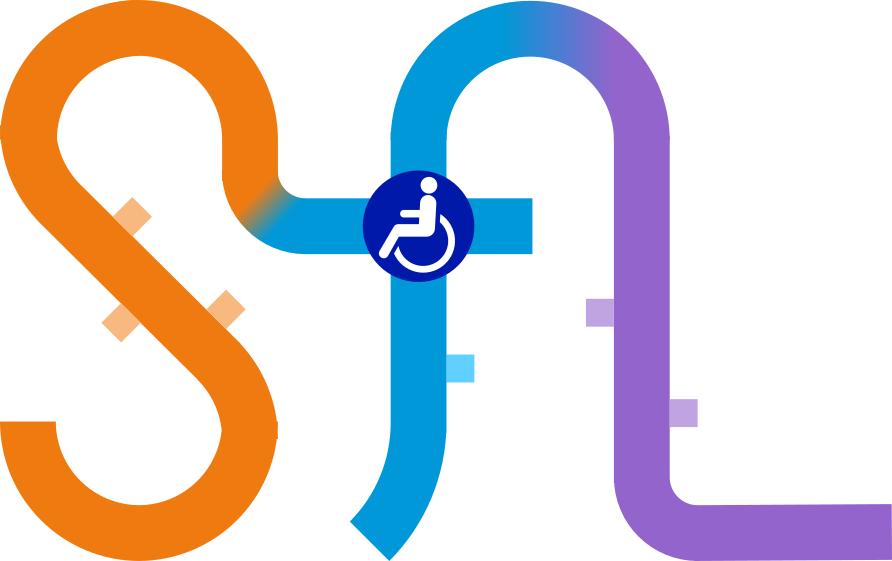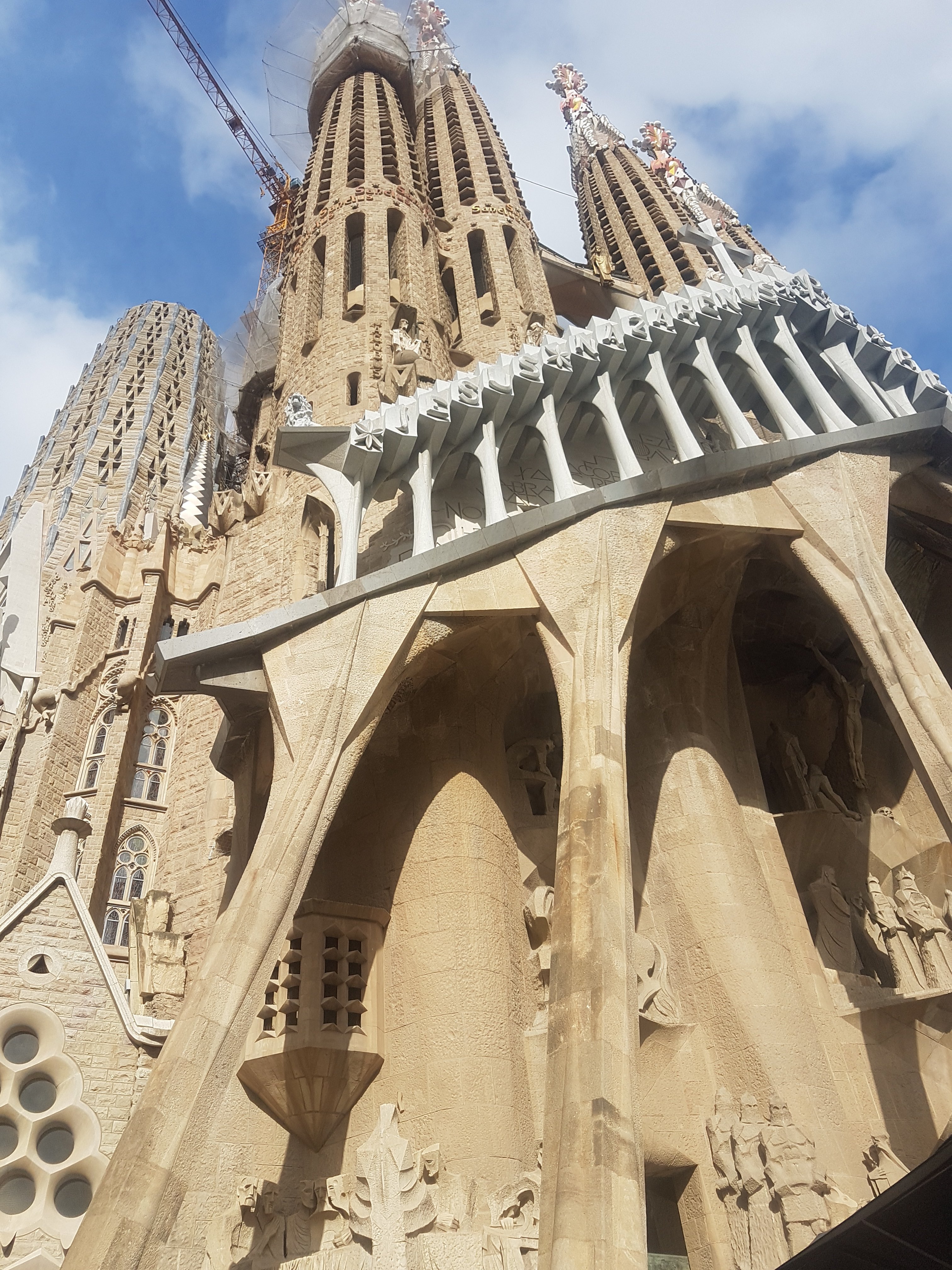Jon and I just got back from an amazing honeymoon in Barcelona, full of exciting adventures and memorable experiences. During the course of 8 days, we probably saw every inch of Barcelona, from the bustling city centre to its quieter outer reaches. What made our ambitious wandering and sightseeing so smooth and painless was Barcelona’s incredibly accessible public transport network, which is by far one of the best in all of Europe. This post will be a comprehensive overview of the state and quality of accessibility in Barcelona.
Barcelona is the centre of a metropolitan area that includes 5 million inhabitants, making it one of the largest in the continent (although still smaller than both London and Paris). Reflecting this large population is the dense and diverse public transport network, shown in the map below:
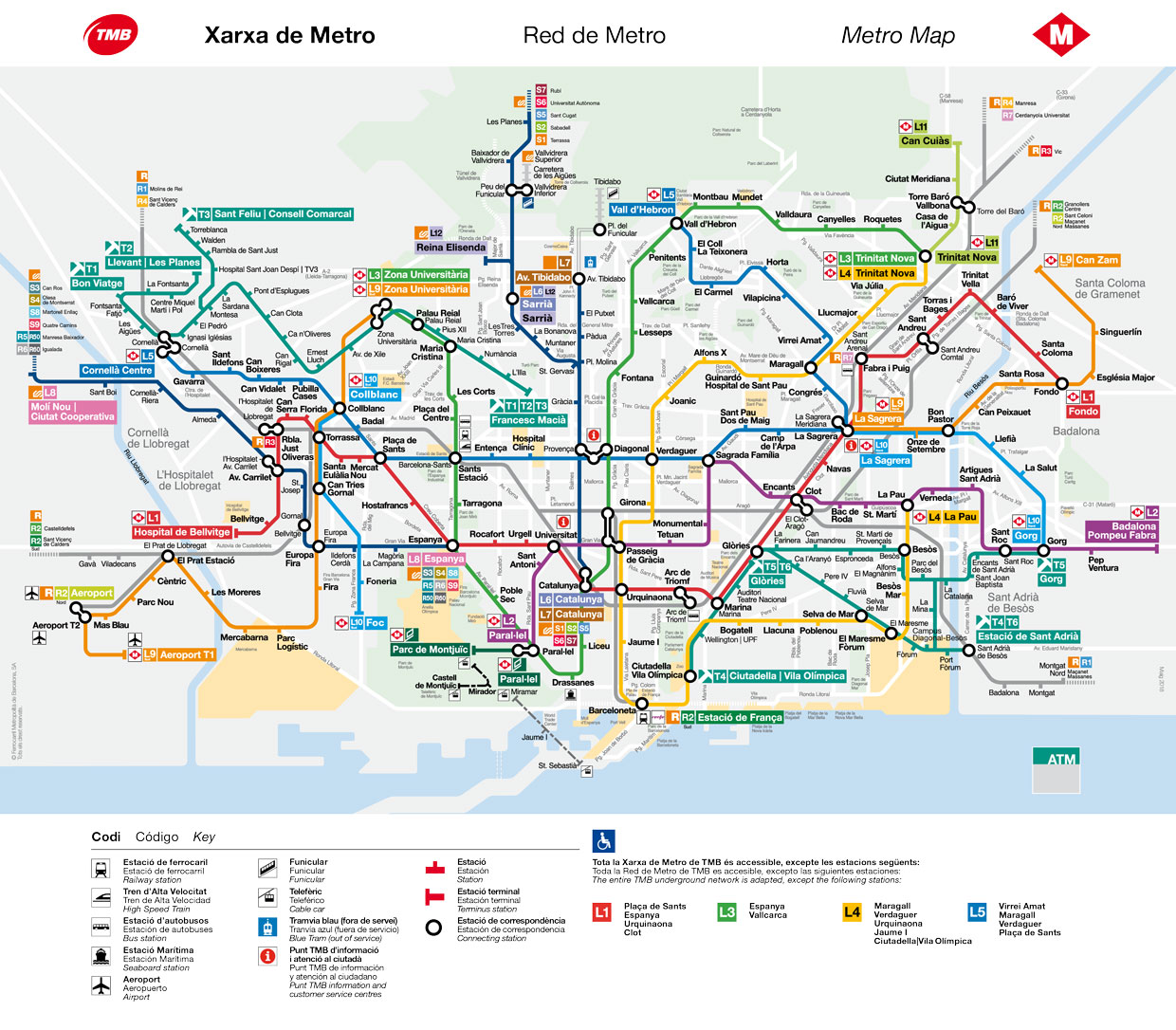
In addition to the fully accessible bus network, Barcelona has a metro system (L1-L12), trams (T1-T6), heritage trams, Crossrail/RER-style commuter lines (R1-R8), a suburban-metro hybrid network (S1-S7), funiculars, and cable cars. We had the opportunity to travel on all of these modes of transport, except the heritage tram which was under maintenance, and were extremely impressed by the overall accessibility and the unprecedented provision of level boarding.
Barcelona started becoming serious about accessibility after being awarded the 1992 Summer Olympic and Paralympic Games. Since then, Barcelona has achieved an incredible degree of accessibility, with more than 90% of the entire rail network having step-free access. With such a system, it is more useful to highlight the stations that are NOT accessible, and there is an unofficial step-free map of zone 1 of the network:
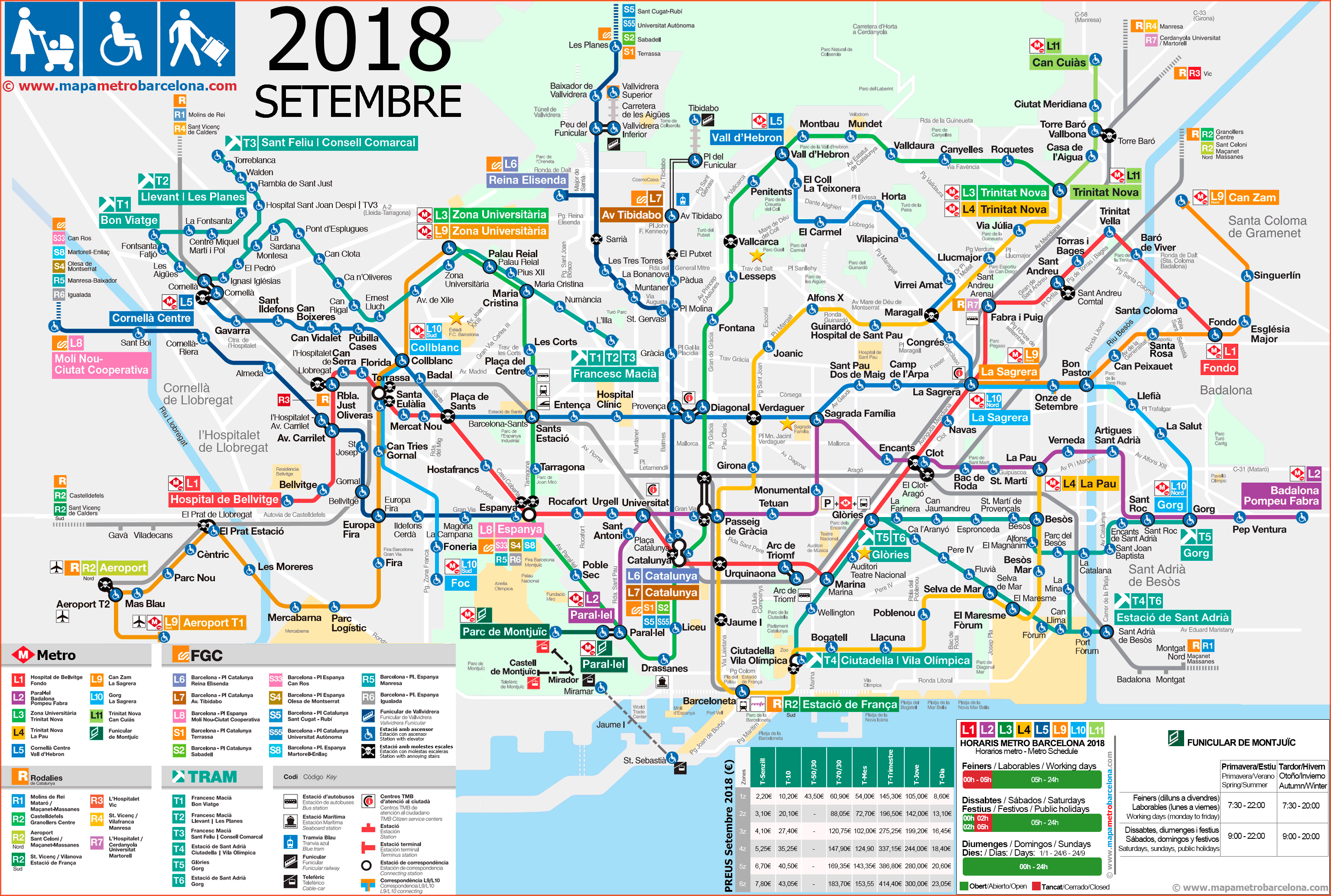
Unfortunately, I have already found several errors, mostly due to recent openings, that over-represent the number of inaccessible station (I counted around 6-7). Hopefully this will be changed once I let them know, as this was the map we were given at our accessible hotel, MICS Sant Jordi.
Without further ado, I will now go through the main accessibility features on each mode of transport.
Metro and Suburban-Metro Hybrid
These two systems, which are closely intertwined, are probably the ones that tourists are most likely to encounter. Lines L1-L5 and L9-L11 make up the actual Barcelona Metro, which runs exclusively inside the city and whose lines are largely segregated from other services. The remaining lines, L6-L8, L12, the S lines, and partially R5-R6, make up the Catalonian-run (FGC) suburban-metro network. These lines are based in one of two inner Barcelona terminals, exhibiting a normal metro pattern within the city while some morph into longer-distance commuter networks. A similar example could be the Moorgate-based Northern City Line services in London, which has both metro and commuter rail characteristics.
Overall, I found the stations very simple in design, with somewhat narrow platforms and and effective wayfinding signage.
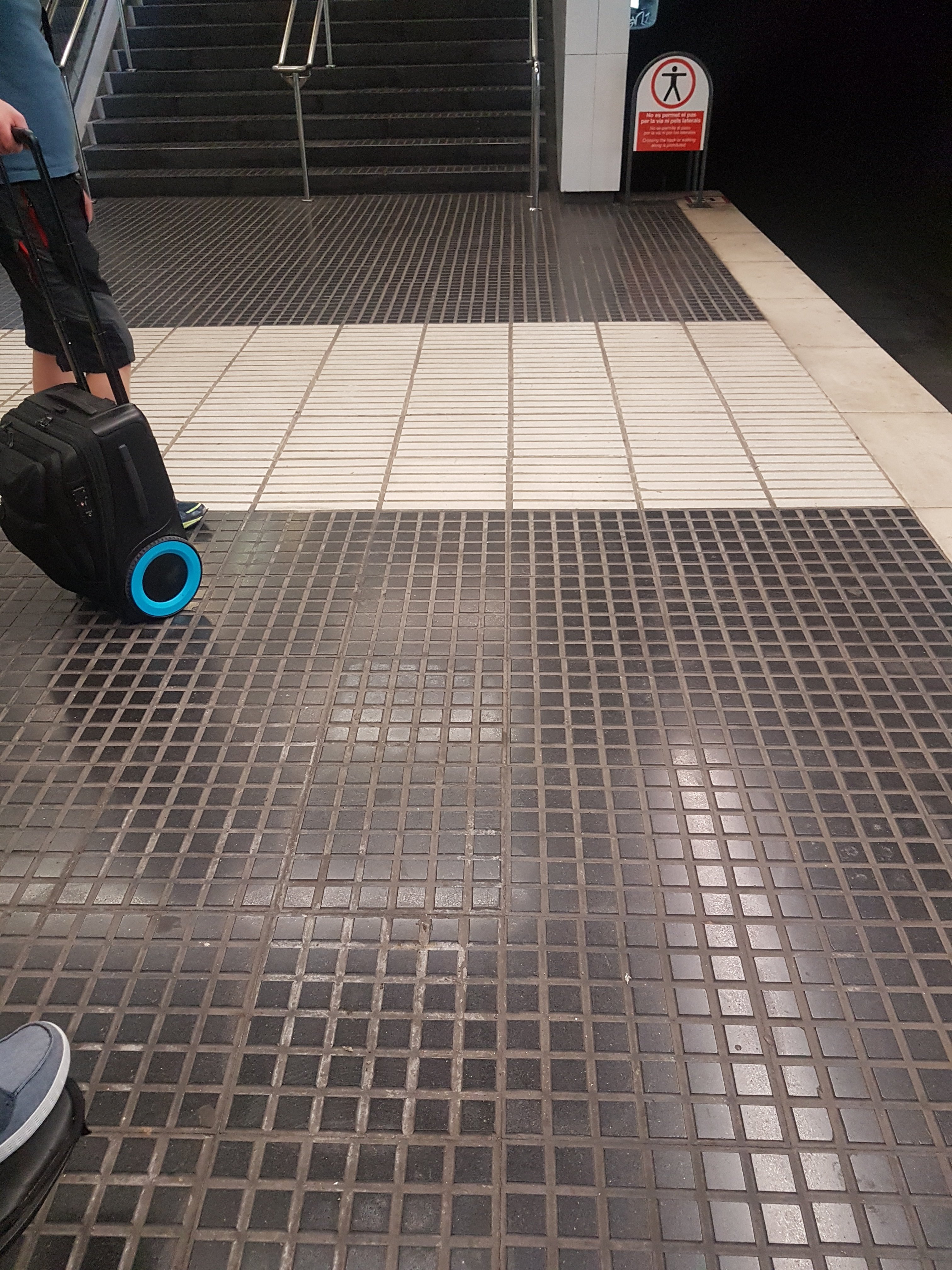
With most of the network being underground, the entrances to the stations are rather inconspicuous, with a lone lift and escalator often being the only clue that there is a station below. It is clear that function was more important than form on this network.
FGC Lines
The FGC lines have recently achieved 100% step-free access, with all of the stations that we encountered having level boarding.
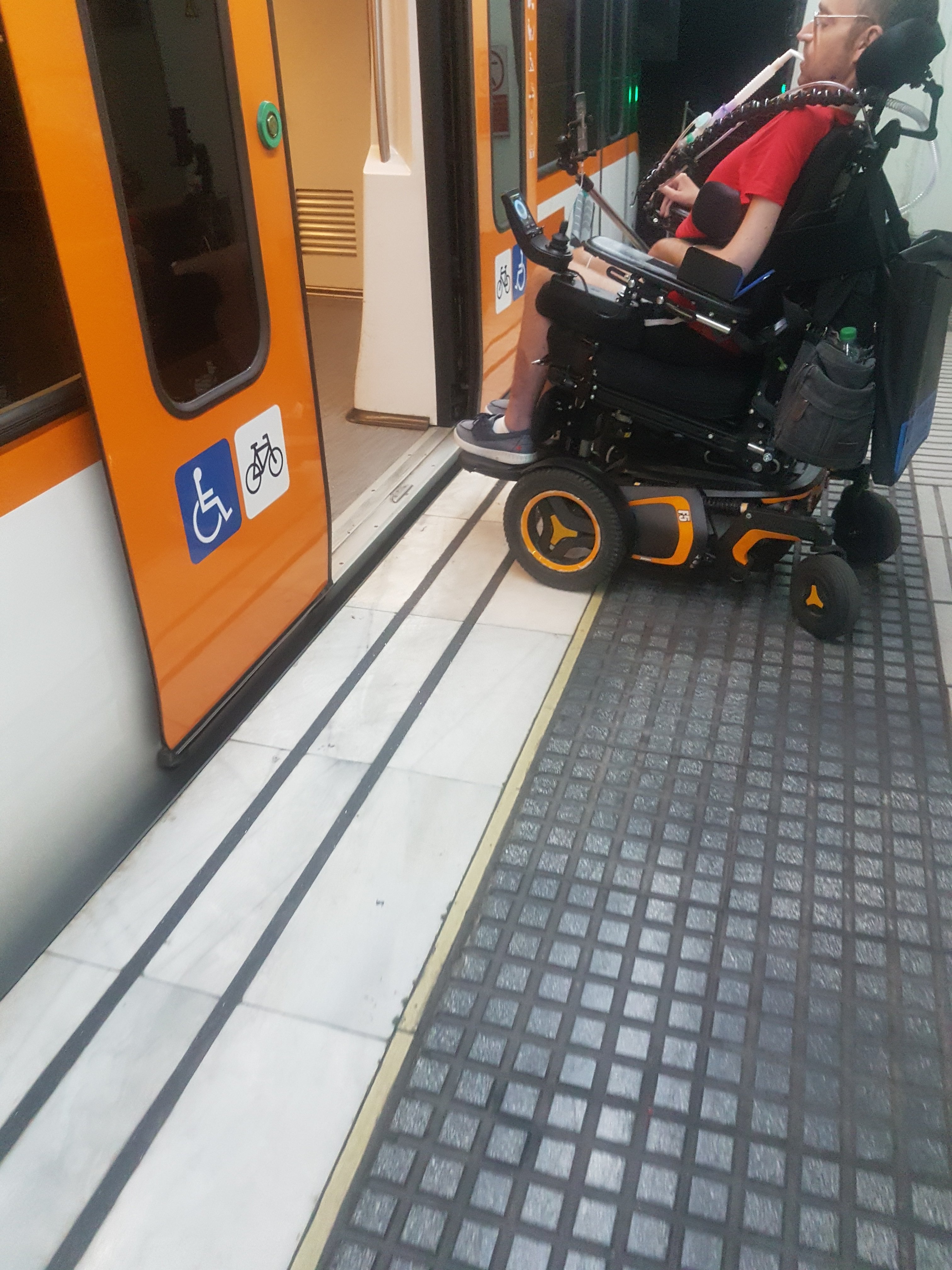
Looking across the lines, it is clear that some of the adaptations are still ongoing. While our station, Les Tres Torres on L6, had raised platforms throughout the length of the train, we also found examples of platform humps. In one case, we saw a platform in the process of being raised, and another that was testing out platform-edge doors.
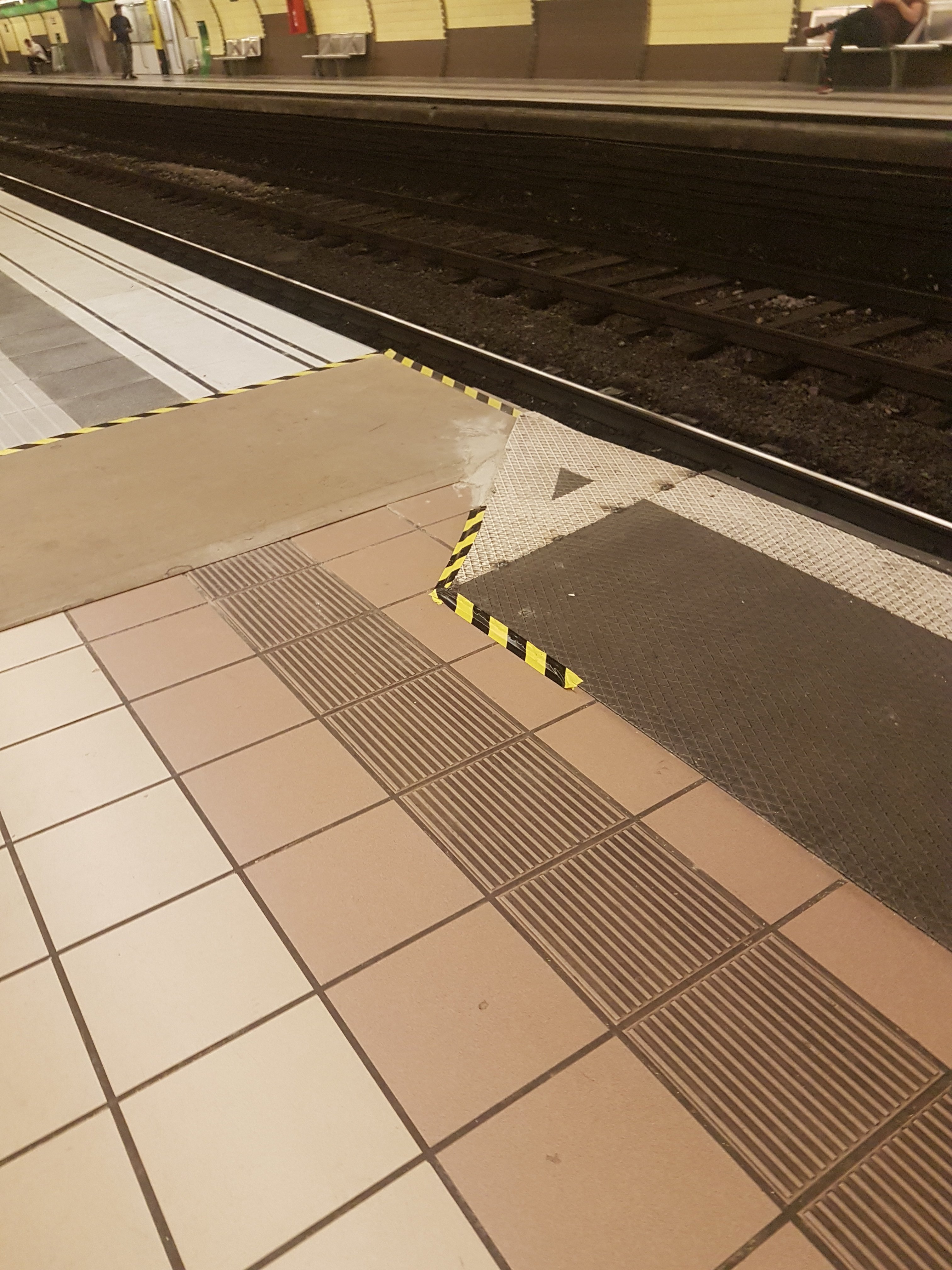
In terms of the trains themselves, we were surprised at how much space the wheelchair-designated areas had. For all the metro and metro-like lines, these are located at the front of the train (with sometimes a second one at the very back). All in all, we had a great experience with these services.
Barcelona Metro
The Barcelona Metro lines are the ones with the greatest variation in accessibility. Made up of lines that range from the 1920’s to brand-new sections that opened during our trip, the system shows that significant progress can be achieved in accessibility if there is sufficient interest and will. Out of a total of 156 stations (counting each set of platforms in an interchange station as separate), only 14 of them currently lack step-free access. Unsurprisingly, these stations are all on the oldest lines (L1, L3, L4, and L5) and include complicated interchanges. Nevertheless, Barcelona has a concrete plan to adapt these remaining stations by 2023.
In order to carry out such a widespread step-free access campaign, there is an inevitable compromise when it comes to connectivity at interchange stations. As such, at many important stations, changing between lines may involve coming out into the surface, finding the lift for the other line, and then going back into the system (similar to the interchange between Jubilee and Northern lines at London Bridge). An issue with this is that once you are at street level, it is not immediately apparent where the other lift is. While this does mean that interchanges can sometimes take longer than expected, this cost-cutting technique may be what made the campaign viable in the first place.
Finally, level boarding-wise, every step-free station has provided a platform adaptation to help with this. 99% of the time it worked perfectly, but unfortunately, there were a few exceptions. We noticed that some platform humps in Barcelona were extremely simple in size and design.
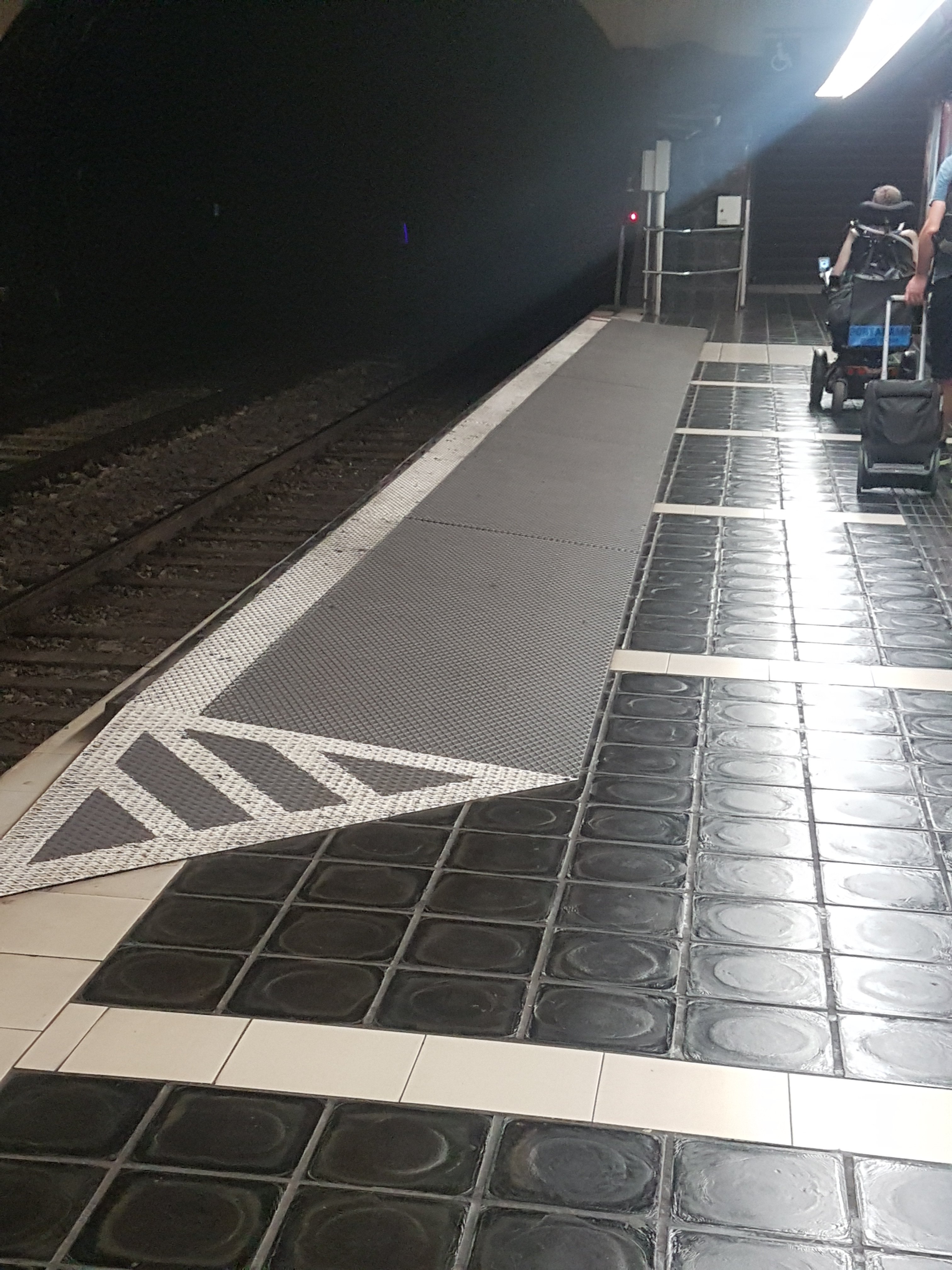
We thought this was a great idea as they did seem quite cheaper than the more involved work done on the Victoria line. However, we found that this design can make boarding a lot more difficult if the hump and train floor are not perfectly aligned. Since the hump is already at an angle, negotiating a small step in addition to moving uphill is significantly harder than if the platform is level. And so, for these cases, we decided to resort to our portable ramp (highly recommended for those who are able to use one). I do hope that there is a plan to replace these humps (which are effective for the most part) with more suitable alternatives. Otherwise, we had no issues with boarding.
Commuter Rail (Rodalies)
The Rodalies network, run by the Spanish government body Renfe, is Greater Barcelona’s express transport system. With the bulk of the network centred on two underground sections through the city, it also provides fast connections within various neighbourhoods in Barcelona. As the Rodalies services run on the national Spanish railway network, we begin to see a situation that is more similar to commuter lines in London: a lower percentage of step-free stations and trains that would usually have floor heights above that of the platforms. The standard commuter rail platform has a height of around 680 mm, noticeably lower than the 915 mm UK standard. Despite this, the average train door height is about the same, and so boarding requires two steps instead of one.
This makes it difficult to use manual boarding ramps (we never saw any on the network), and raising the platform was likely out of the question due to the freight traffic and just the sheer height difference between the train and platform. Because of this, Renfe initially acquired a small fleet of new Civia trains (34% of total Rodalies trains) with a dedicated low-floor coach that matched the height of the platforms (pictures below). In addition, it has a small retractable gap filler to bridge gaps between the train and platform.
These two features effectively eliminate the step and gap in the platform-train interface, and they require minimal investment on the station infrastructure and don’t restrict the passage of other trains. With this, it is possible to have level boarding at regular mainline stations, similar to how the upcoming Stadler Rail trains on Greater Anglia will allow for level boarding due to lower floors.
However, what I found most fascinating was the plan for making the remaining 66% of the trains accessible. As each inaccessible train goes in for routine maintenance, one coach is removed and is heavily refurbished to have a low floor and accessible toilet.
Here is a series of pictures and videos showcasing this brilliant level boarding strategy:
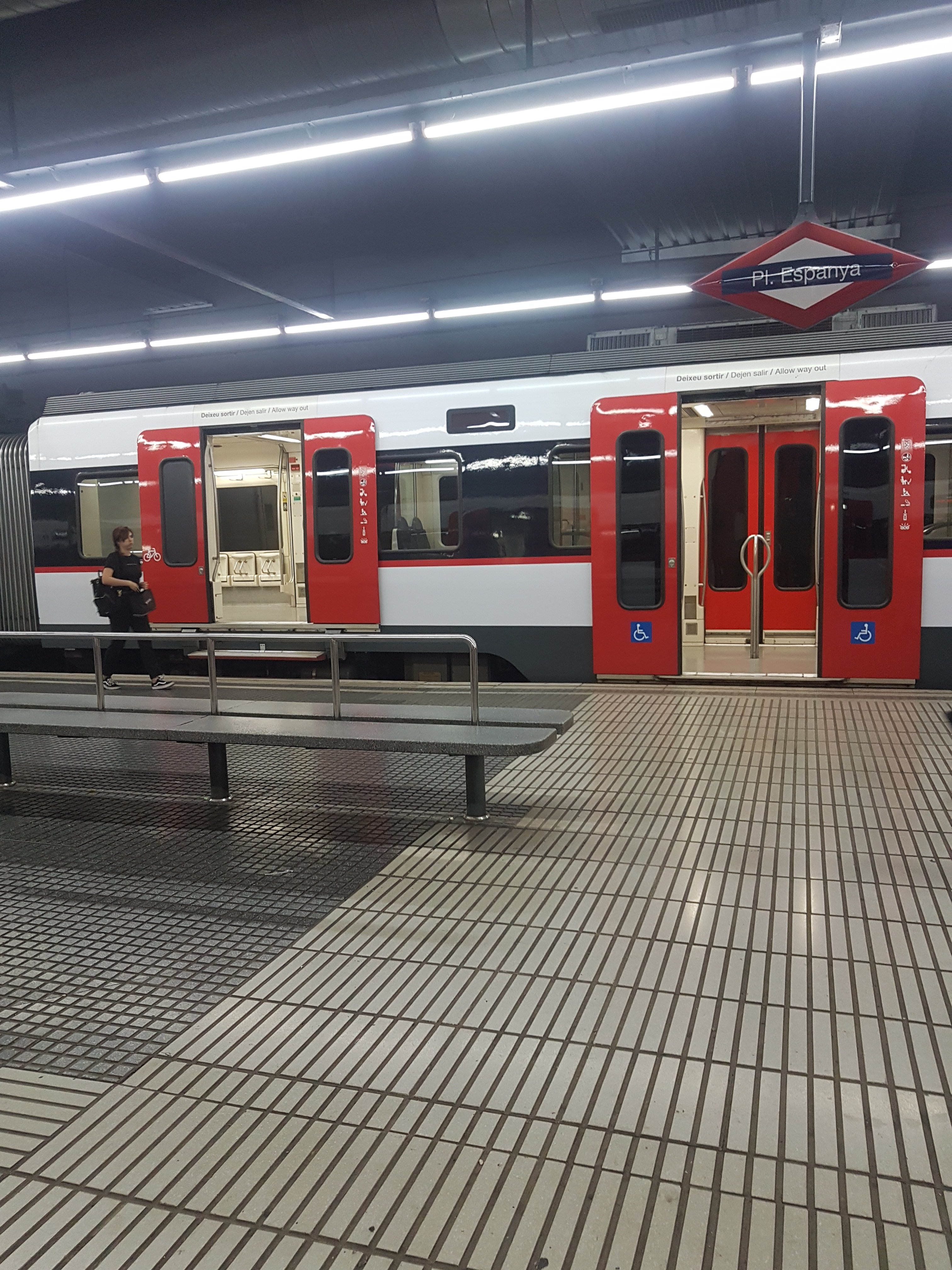
Height difference between standard coach and the adapted one 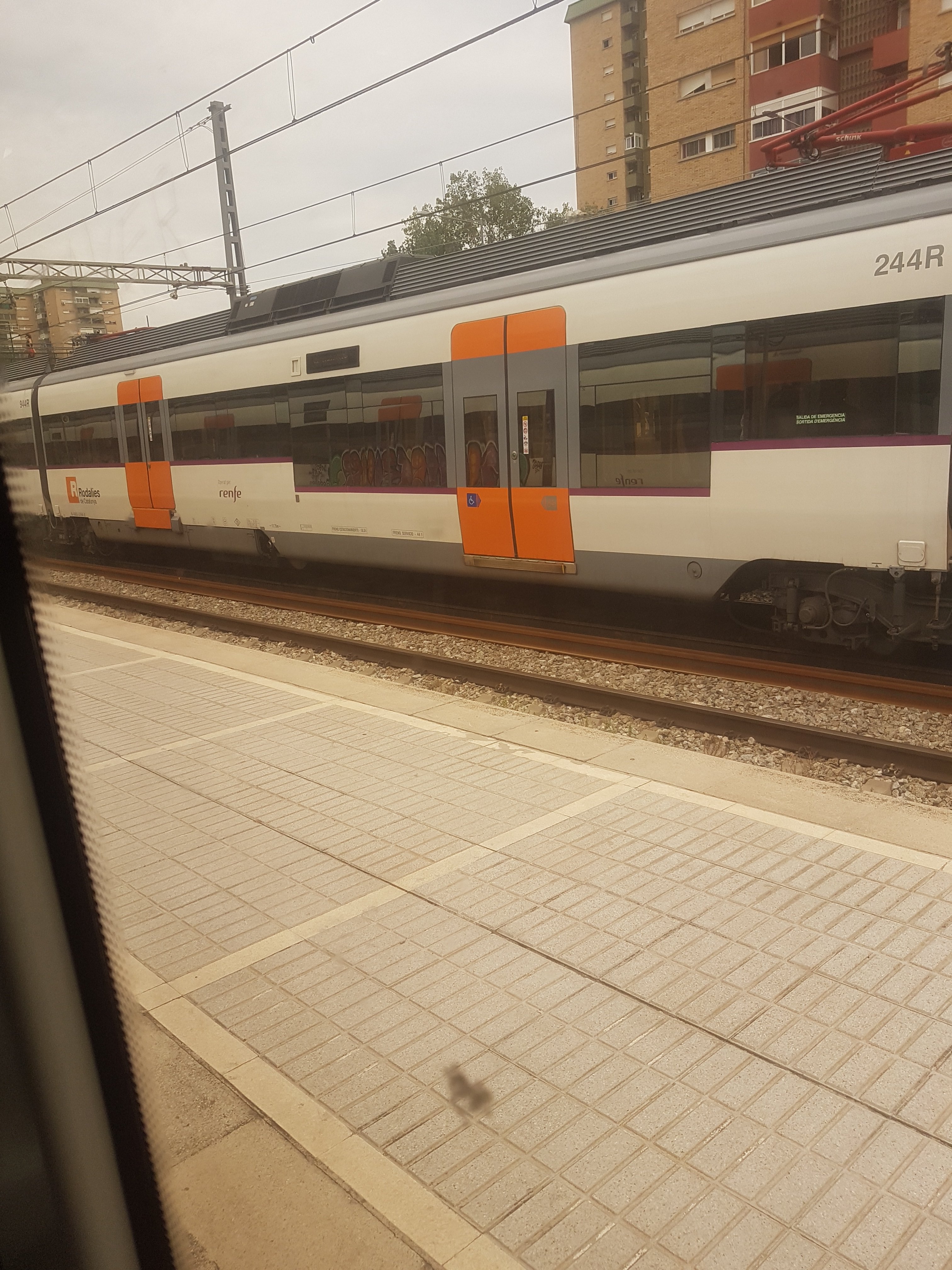
Height difference on another Rodalies train. Note retracted gap filler 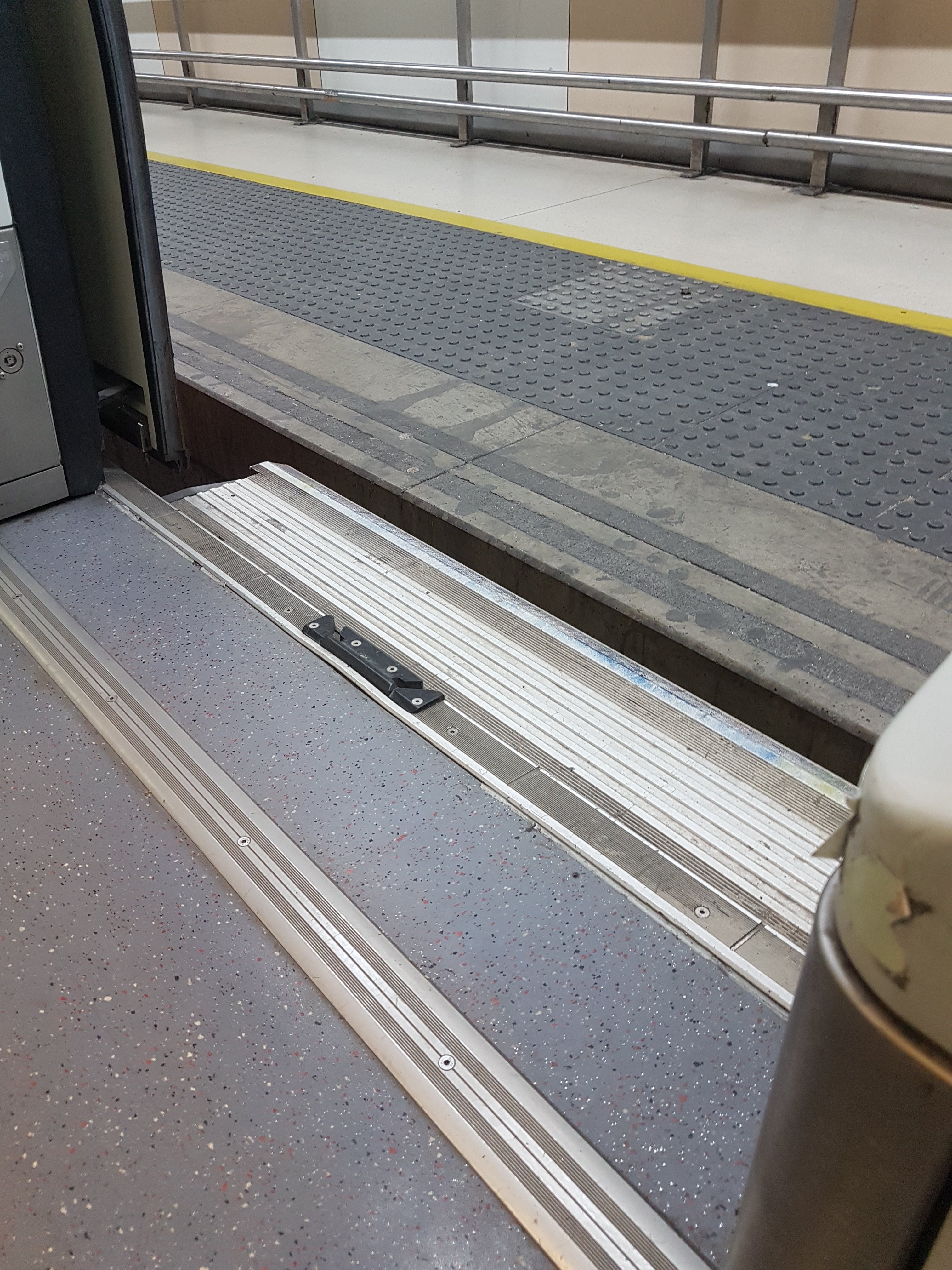
Inside view of platform-train interface 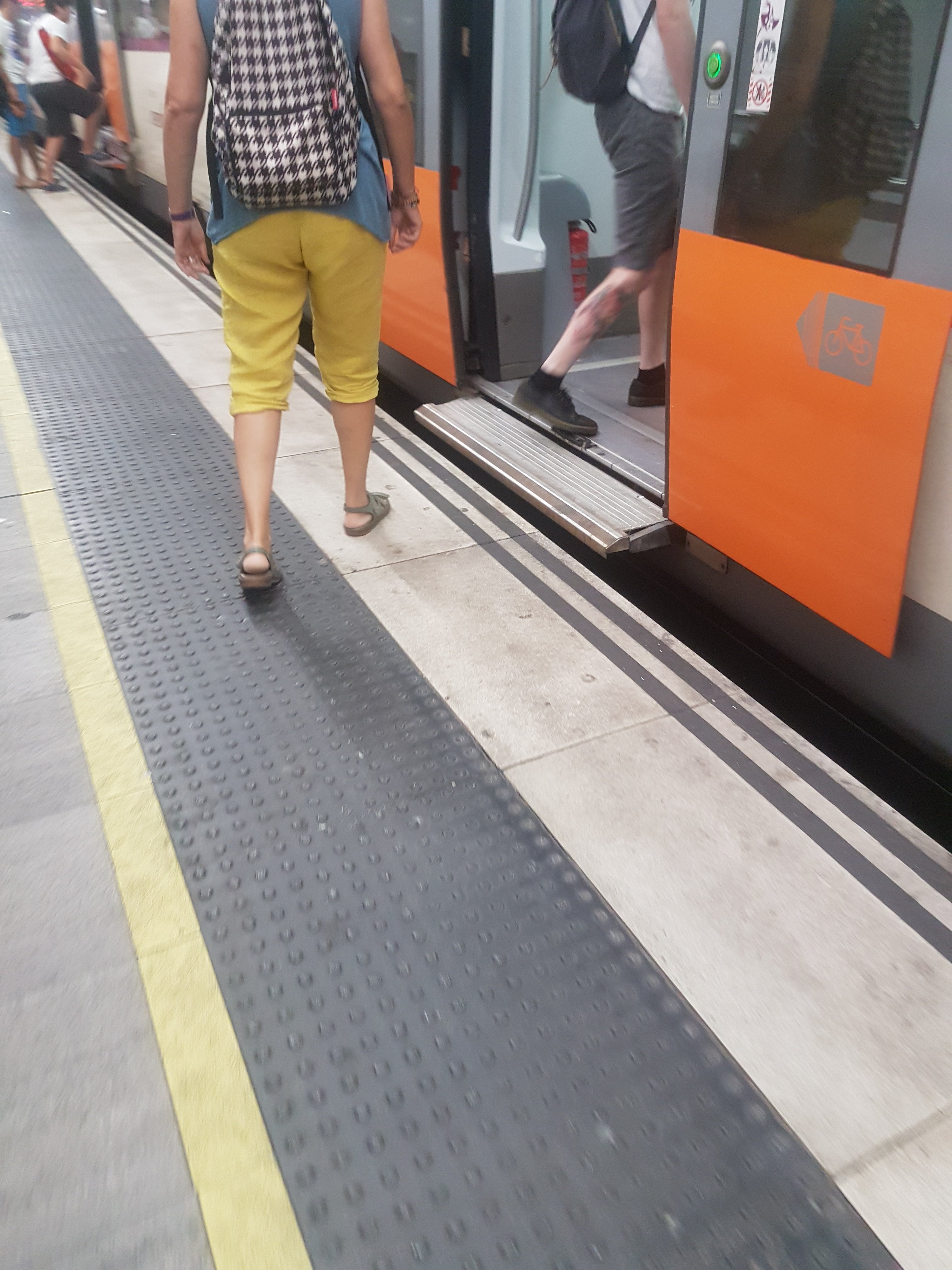
Outside view of platform-train interface

As this work is done in a gradual manner, there is never a shortage of trains. As of now, around 65% of the trains are accessible, with 20 trains becoming accessible a year (roughly 10% of all trains). This means that in less than 4 years, every step-free Rodalies station will have full level boarding. For now, the official Rodalies app can be used to find out if a certain train is accessible, making it simple to plan a journey.
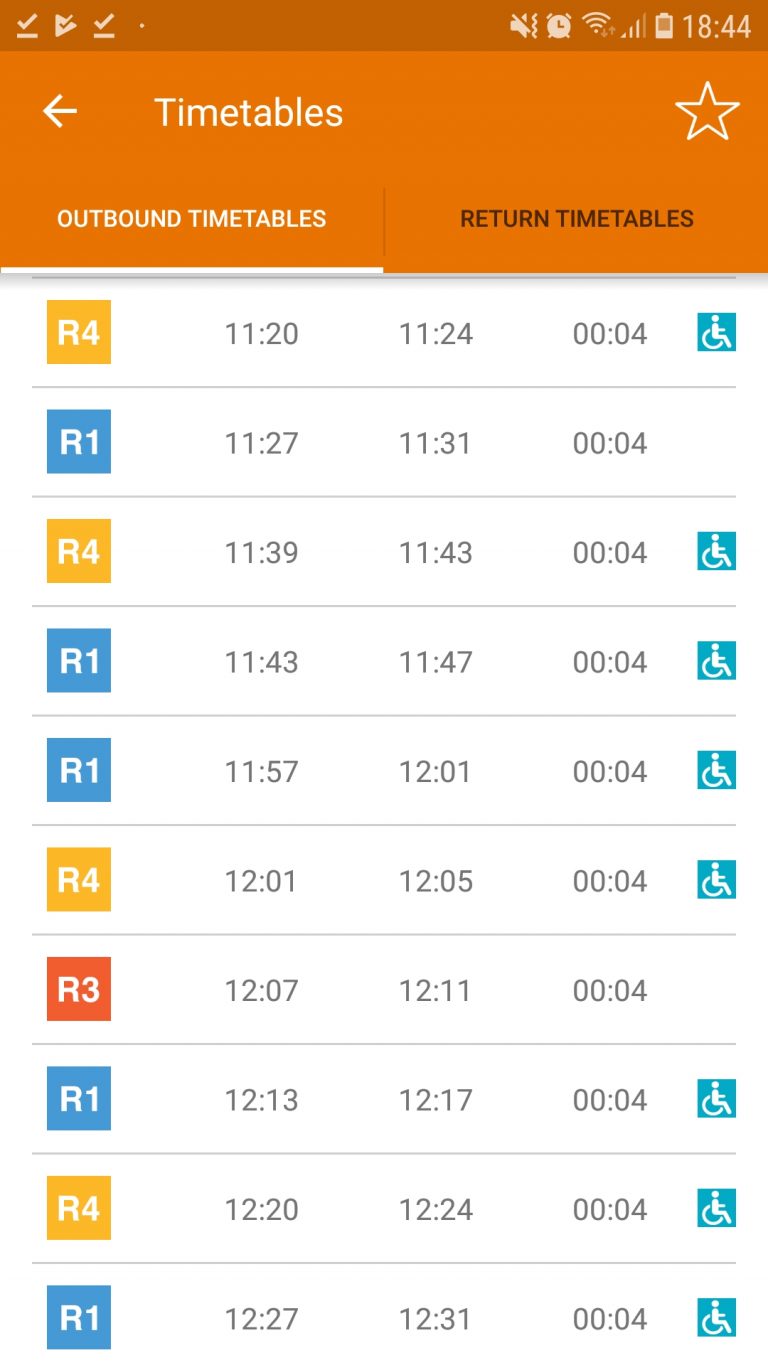
Could the UK consider such a solution for its current trains? Instead of scrapping all the upcoming high-floor trains or debating the role of freight trains in restricting platform heights, perhaps selectively lowering coaches may prove to be more feasible. Of course, this would only be a concern if level boarding were prioritised.
Trams, Cable Cars, and Funiculars
I have grouped these last three modes together because they occupy a more peripheral role in the overall transport network compared to the remaining ones.
Tram
The modern 6-line tram network is a contemporary of systems such as the London Tramlink and the Grand Paris tramways, and as such is completely accessible. Being low-floor throughout with a spacious interior, the trams have level boarding through the length of the vehicles.
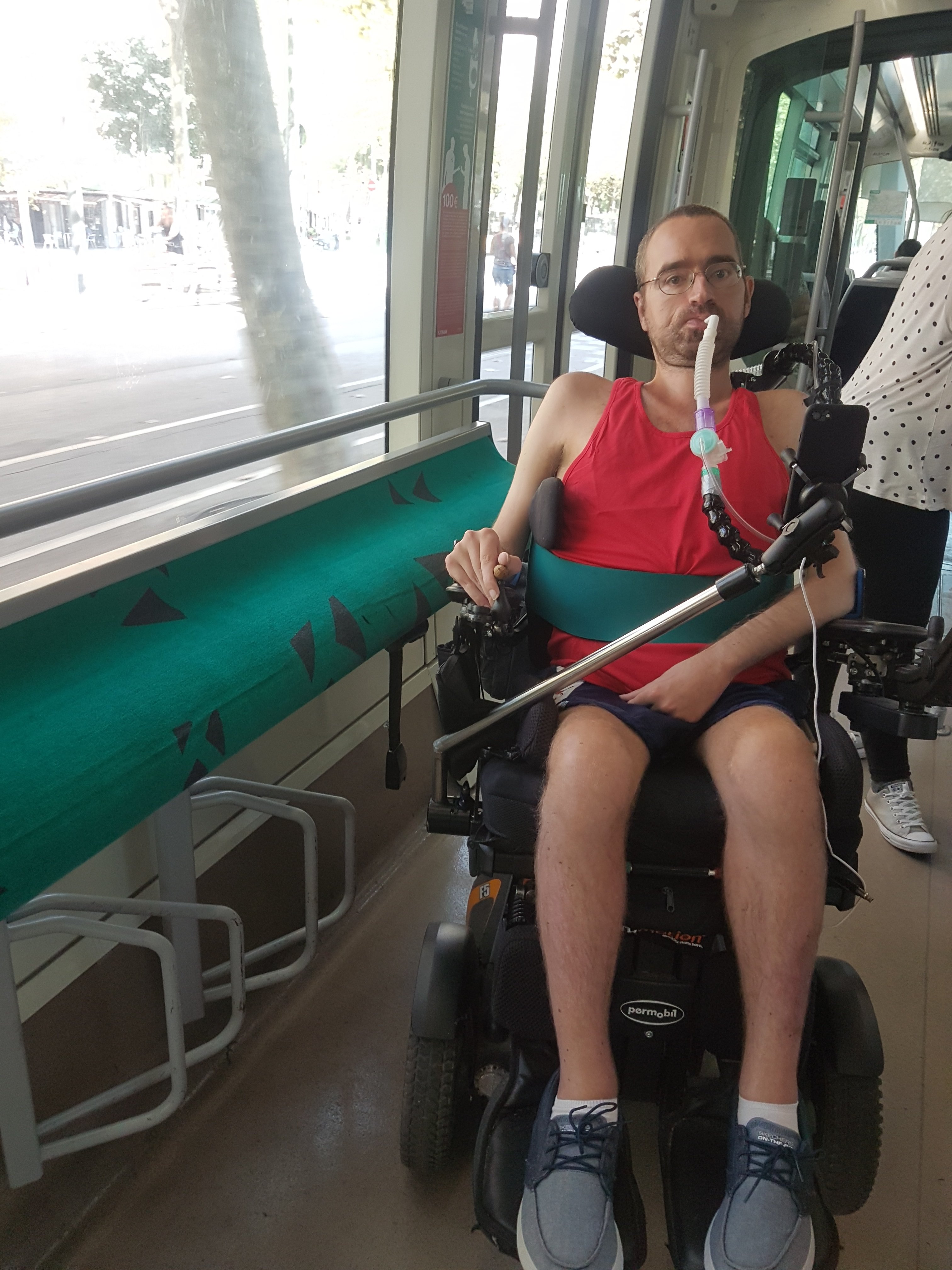
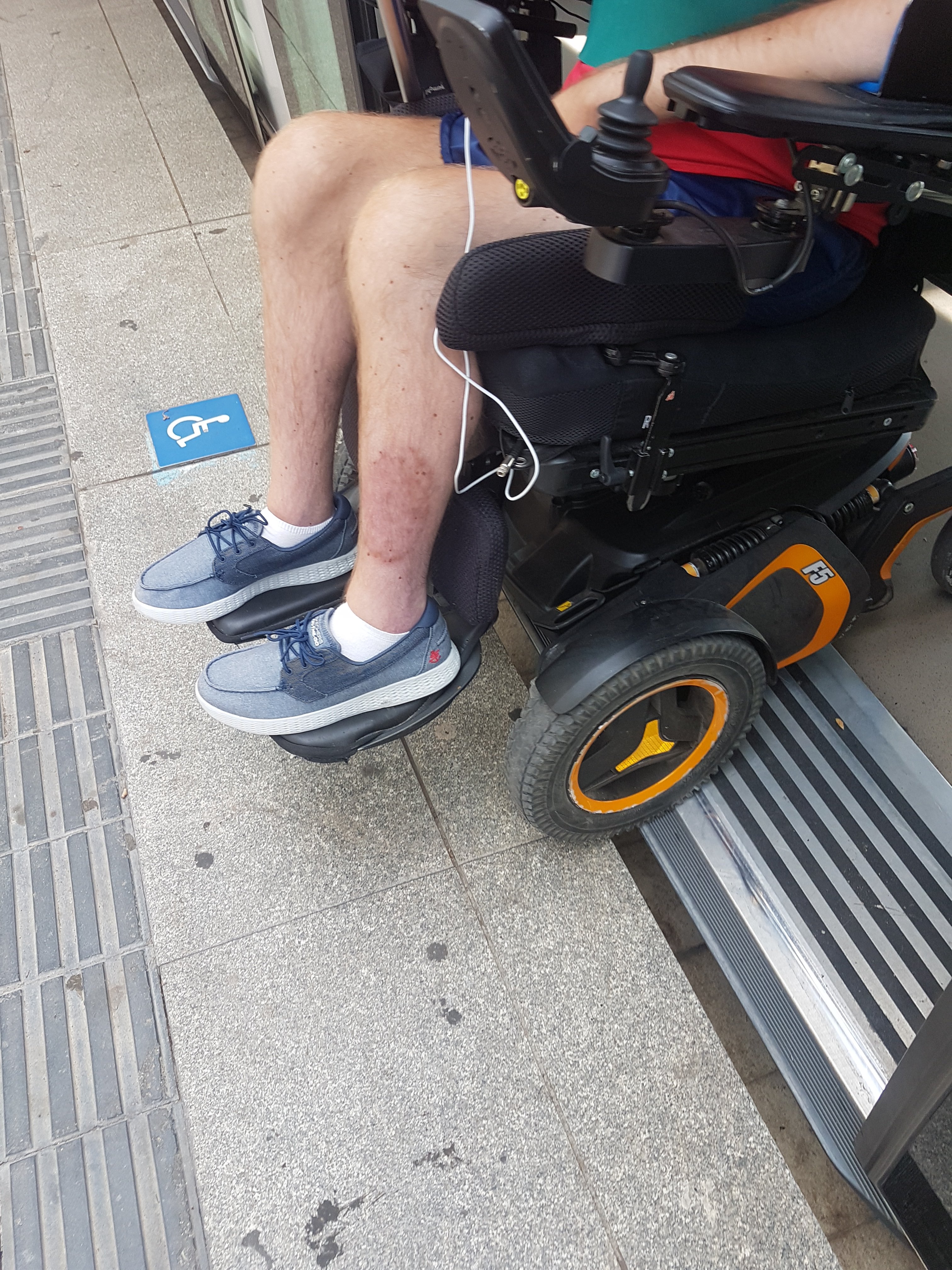
Cable Car
Barcelona is virtually completely surrounded by mountains, so through the years, it has developed a small but important network of funiculars and cable cars to bring quick access to its beautiful peaks. We took the Montjuic cable car, which offered full step-free access and tip-up seats to allow for more space for wheelchair users.
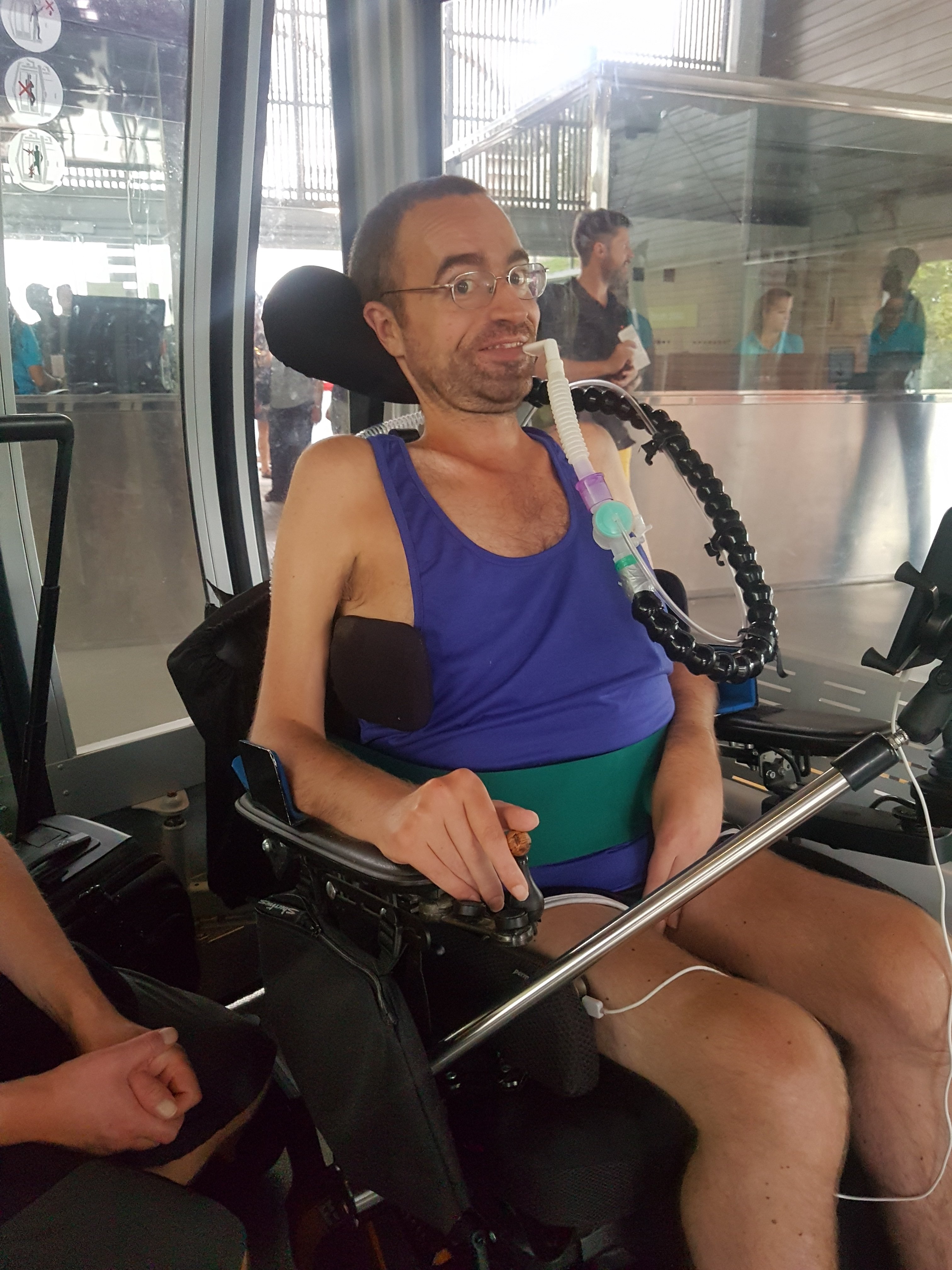
While it is not included in the travelcard fare, and is treated more as an attraction, we did get amazing views of the city!
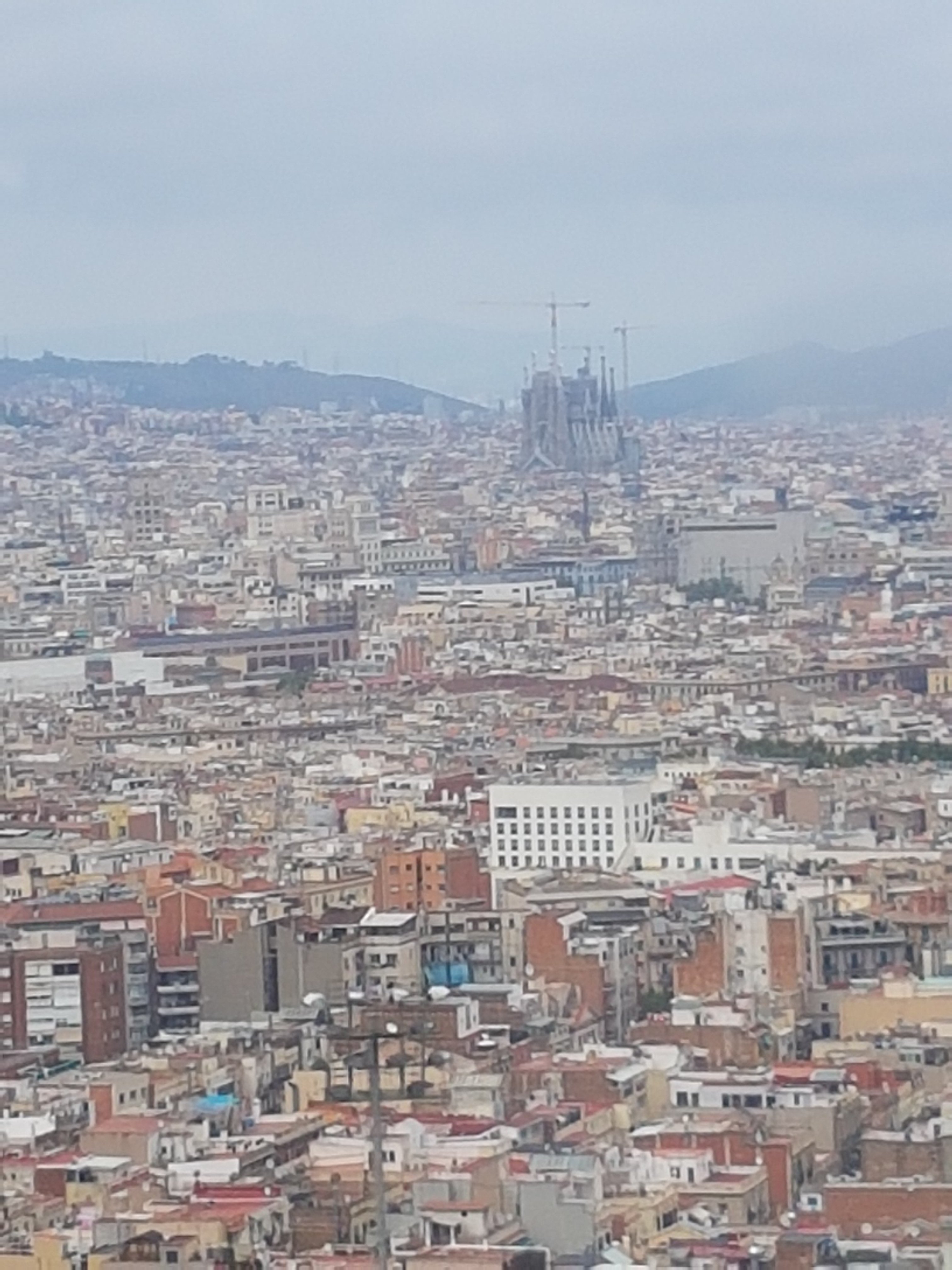
Funicular
Finally, funiculars were definitely the one mode that did give us a few headaches. Owing to their inclined shape , it is very difficult to make them properly accessible. On the first one we rode, from the city to Montjuic Park, we found a mismatched platform-train interface, as the train floor was level but the platform was ramped.
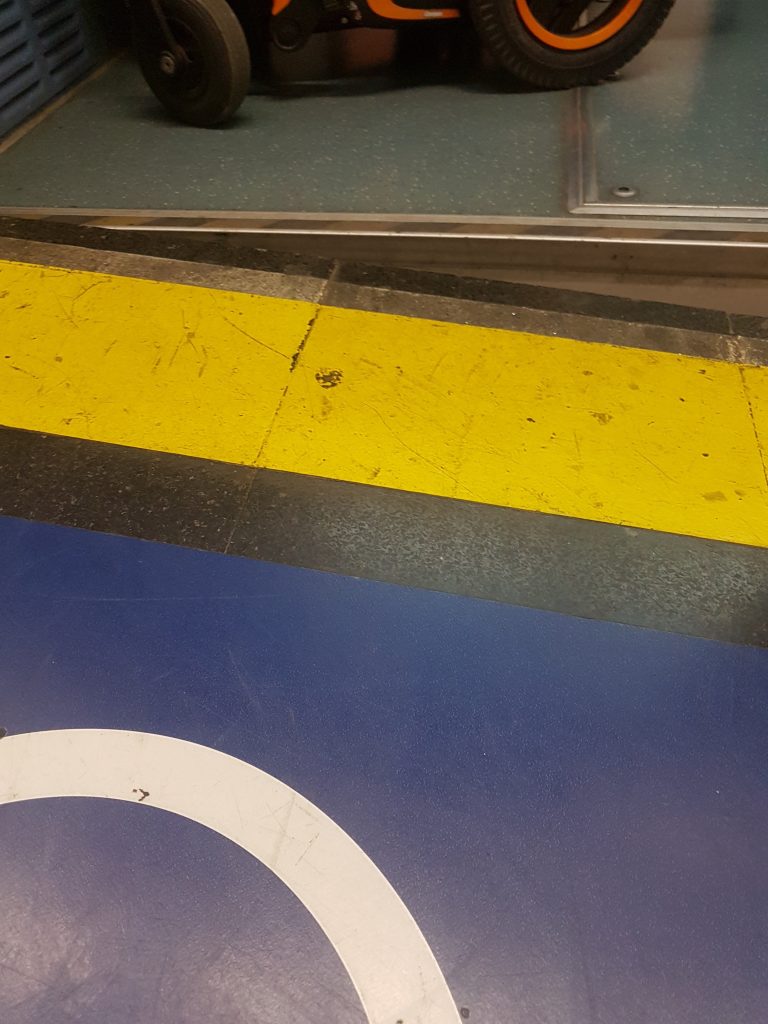
Luckily, we had our portable ramp with us to bridge the awkward gap. Once we reached the top, the platform was level at our exit, but due to the slightly too large gap, we still made good use of our ramp.
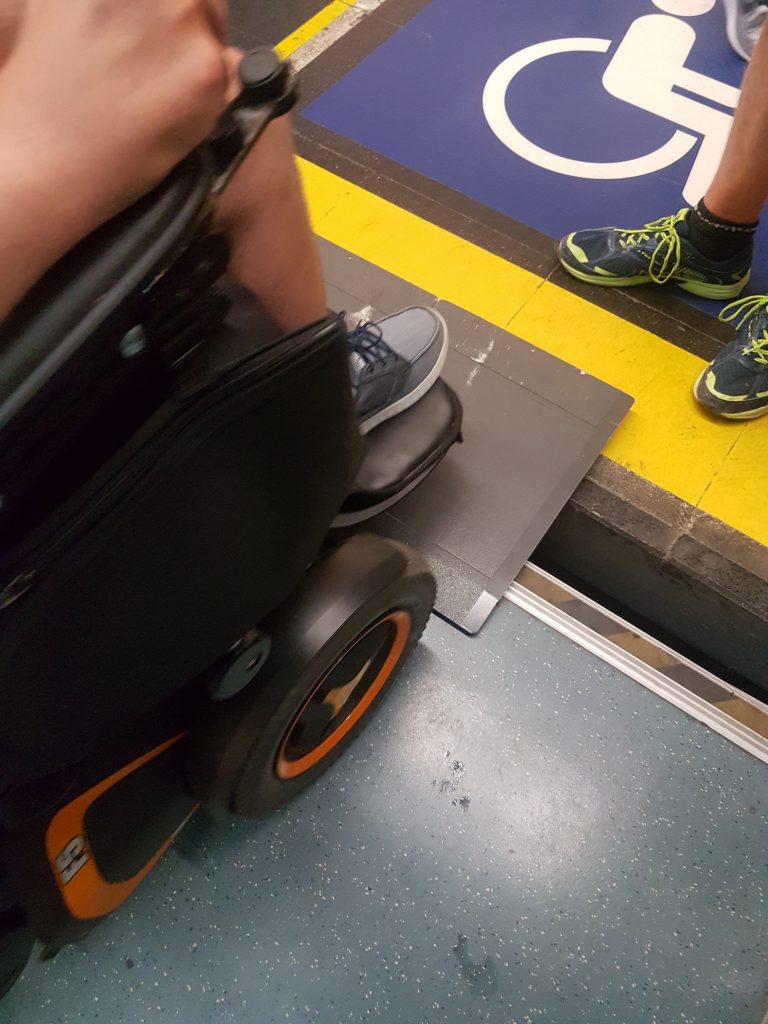
In another funicular, up to the Tibidabo church and amusement park, we even had to deal with a precarious stair lift in addition to using our ramp.
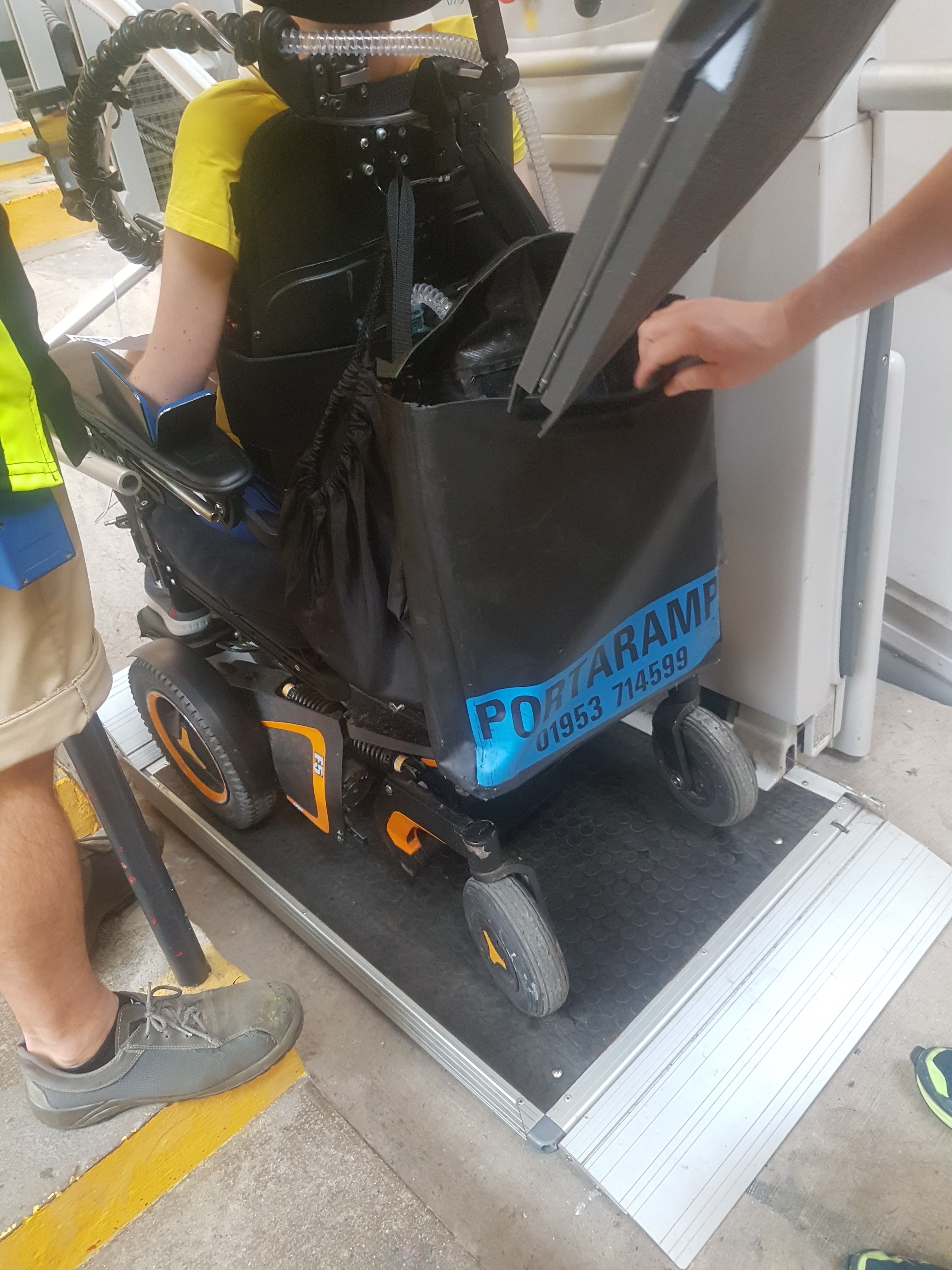
All in all, we had an unbelievable time in Barcelona and we felt like we really got to see all the sides of the beautiful city and its nearby beach-side towns. While it is strange being back to the UK after having experienced fully independent turn-up-and-go transport services for over a week, Jon and I are now more determined than ever to put pressure on transport authorities in the UK to ensure the same level of accessibility.
Bonus Content
We had the great opportunity to attend the opening day of operations of the south branch of L10. Equipped with platform-edge doors as well as driverless operation, it was the perfect opportunity for Jon to get on the driver’s seat!
